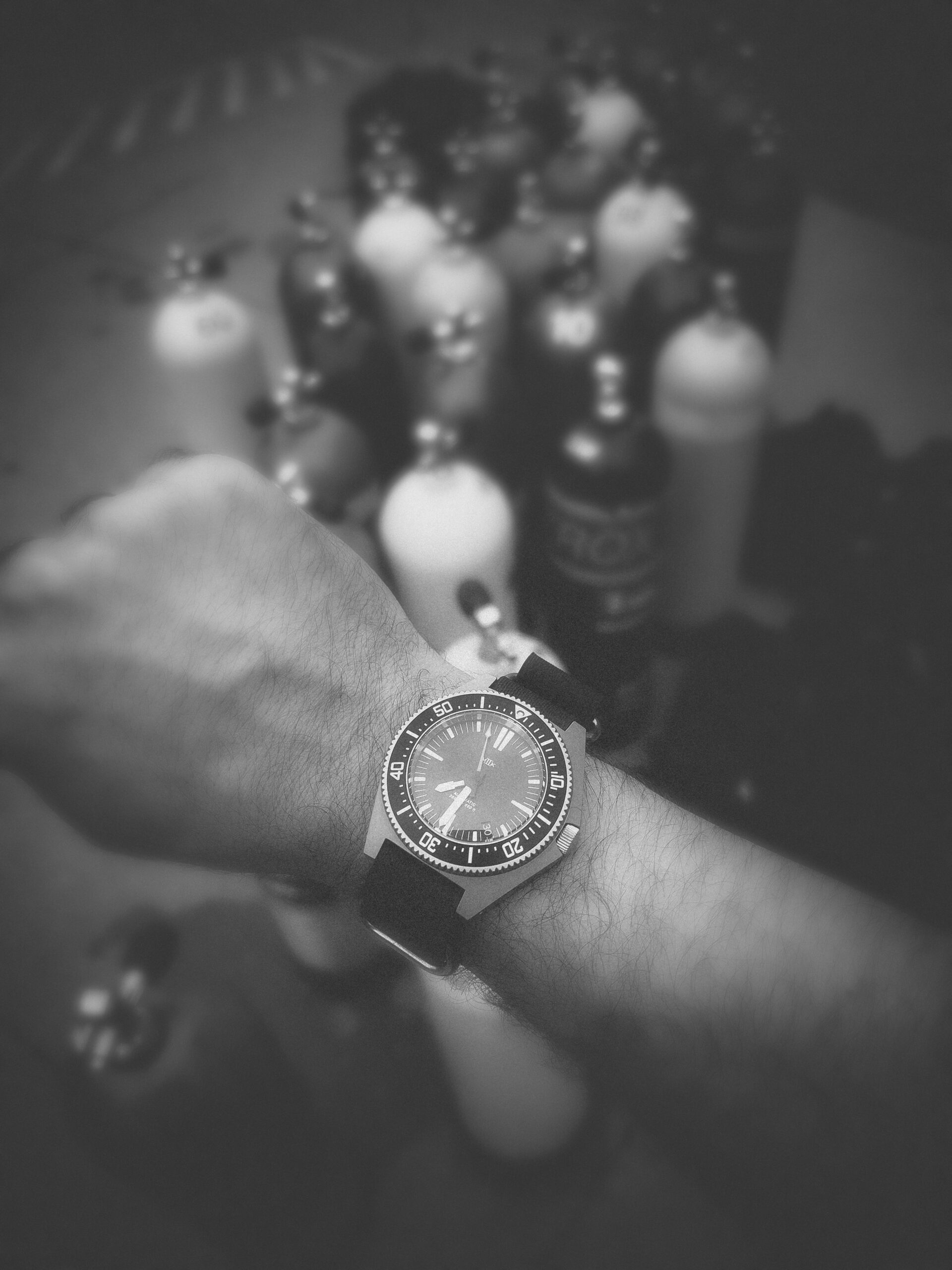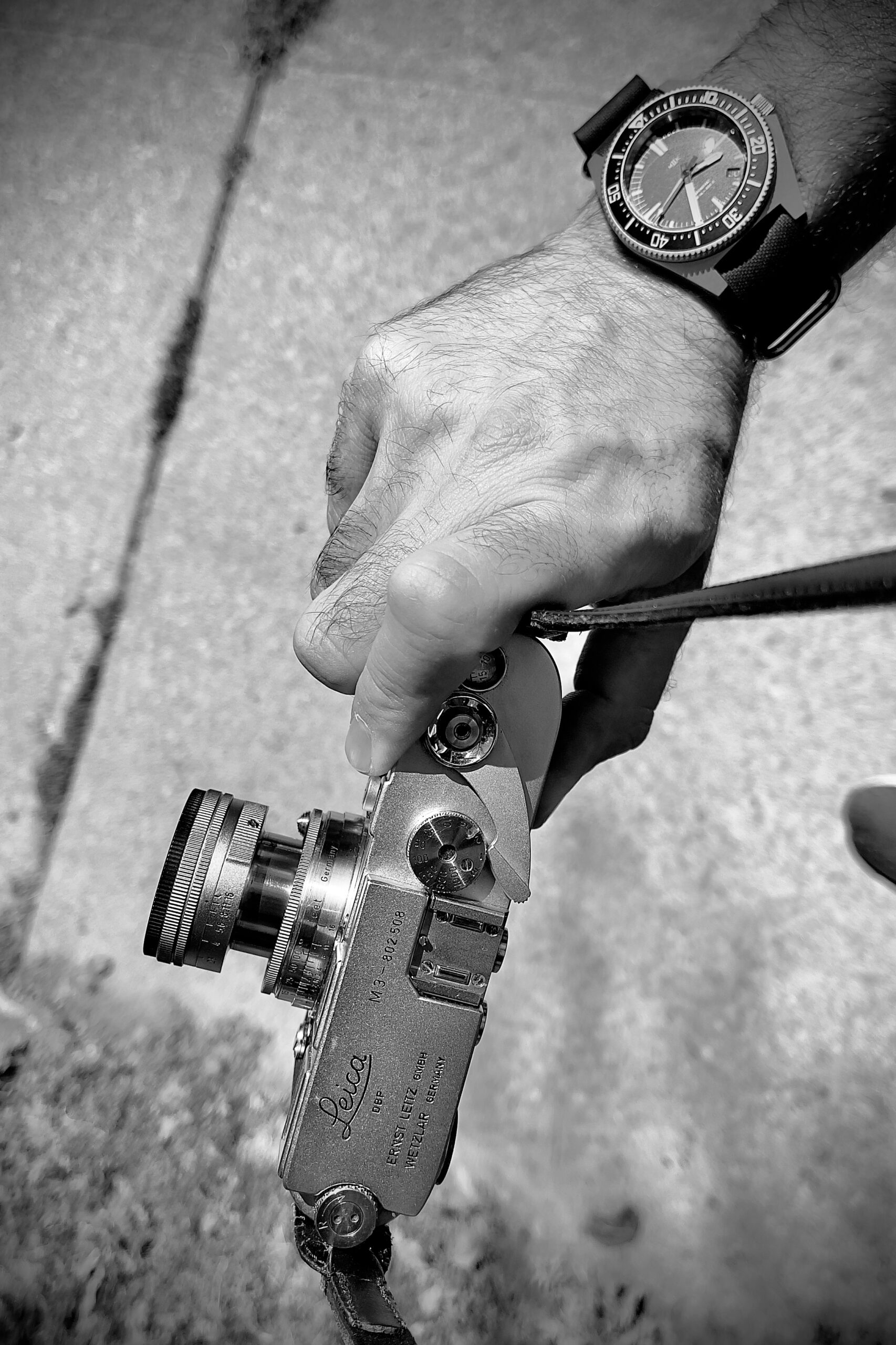1576 words
To Be Unexpectedly Crushed
The look of panic at first drew everyone’s attention, but once the words “it’s a Rolex” were uttered, the onlooking dive professionals rightfully refocused on the large body of students in front of them. Our time at the pool was limited, and plenty of skills still needed to be covered. Thankfully, I was on deck duty, and I quickly made my way over to the student who, at this point, had rapidly exited the water, removed her dive gear, and found a private corner. Hunched over, she raised her watch to her ears as she tried to diagnose what was wrong.
“What’s the matter,” I asked as I approached.
“My watch,” she said as she paused and raised her concerned gaze in my direction. “I don’t know what happened. It’s all fogged up. When I unscrewed it, I think I heard a hissing. It’s from 1998, but I bought it last year from (store name redacted). It has its box and papers, so it is not a fake.”
My heart immediately broke into twenty-six pieces for her. She was doing her open-water certification with her mother, and both are intelligent, polite, kind, observant, and funny individuals. These are the types of people that you would trust with even the nuclear codes. To see her go from excited to sad was crushing.
At this point, I explained to her what could have gone wrong and that getting the watch in a dry environment was crucial. I also suggested that she take the watch directly to Rolex, for the store that she bought the watch from does not have the best reputation amongst the watch community. At Rolex, they could accurately diagnose the problem. More importantly, they could see if this was a reoccurring issue and communicate that to her, whereas the store would hide that fact from her and do their best to lay the blame on her.
The following day, she confirmed that they had placed the watch in a dry environment, within a sandwich bag, which was placed carefully in a bowl of rice so that none of the particulates from the rice would cause any more issues. It was at this point that I showed her my MKII Paradive on my wrist.
“I, too, have watches I adore and want to dive with,” I said as I recalled my beloved Seamaster, its dented and battered case, and scratched ceramic bezel and sapphire crystal. “But honestly, it is best to bring a tool to such environments, not a piece of functional jewelry you love.”
She nodded in agreement as we waited for the rest of the group to finish assembling their gear and asked, “what about Tissot?”
“They may be fine, but companies such as Seiko and Citizen make great dive watches that are durable, relatively inexpensive, and won’t make you a target while diving abroad.”
“Yeah, you’re right. It’s just that I never even showered with that Rolex. I figured it is rated for this sort of water,” she said, still dejected.

Totems of Affection Improve Our Lives, But Not Without a Cost
I have seen this many times before with recreational divers, and it is something that I am guilty of as well. We want to take these beloved watches with us on these adventures. We want to build memories with them. But, doing so carries risk, and I am torn about exactly how to approach this in the future with a student. I understand the drive to wear one’s favourite personal totem while out on a dive or out hiking, just as much as I do for those who want to wear the same timepiece while their firstborn enters the world or for when finally breaking through that glass ceiling and make partner at their firm. Scuba diving students are overwhelmed with a course load that is very gear intensive. They are also under the watch of instructors who may be overly concerned about their own liability, which leads to an environment that is tenser than it needs to be. This results in things that are common sense in normal environments being forgotten and overlooked. There are a lot of procedures and details to remember, and bringing up their watch is not something I am comfortable doing.
Within gear enthusiast communities, many people like to use hashtags and show them using their pieces of jewelry as tools. For clarification, when I write jewelry, I am talking about watches, cameras, and pocketknives, which are luxury goods that carry a high initial cost of purchase and high running costs. These running costs are more abstract than what we usually think. Not only is repairing such items more costly but the watch or camera will most likely take a lot longer to repair or service. The emotional cost of being without such an item for potentially an entire year can be crushing for most people. Enthusiasts or those in an industry often forget how important such purchases are for most consumers. Buying a Rolex, Omega, Leica or a Chris Reeve Knife is usually a personal milestone that carries much weight. There is also the psychological cost of having to worry about the item and looking over your shoulder as to being a target. Instead of wearing an expensive watch to a dive site, local or foreign, none of these stressors are present. This will allow for a better diving experience overall for the normal consumer. Enthusiasts will continue to do such things even after a few bad experiences, for they are overly invested in the narratives that they build to justify their hobbies.
What Separates a Tool from a Piece of Jewelry
The nuances between what makes an item an appropriate tool or a piece of jewelry are numerous and not the same for everyone. First is the perspective of the individual using the item in the field. If their level of wealth and the state of their collection results in them being unfazed by a damaged watch that costs as much as a new car, then anything can be a tool. For most people, this is not the case and being mindful of the above is instrumental in having peace of mind and mindfully choosing when to leave their home with a tool on their wrist or a piece of jewelry. A Tudor will do as good a job as a Marathon out in the field until they both get damaged and then the consequences of the luxury item come into play. It is important not to judge others for what watches they decide to wear during some high-risk activities. Their tolerance and finances may comfortably absorb the damage or loss of an item that would be catastrophic for you personally.
Companies such as MKII, Sangin and Marathon make watches that still provide the many traits that give enthusiasts joy but in a rugged package that is definitely not jewelry. Their build quality and tolerances are exemplary and leave little room for desiring a better-built device in the field. My personal MKII Paradive is built to such high tolerances, ensuring it is used while out in the field. The Seiko movement NE15 movement has been running at a staggeringly impressive +4 seconds a day, and it is easy to service and replace. In contrast, my Marathon Chronograph Search and Rescue may be built quite well, but its movement, the Valjoux 7750, runs slow and is unpredictable when the chronograph is used. This results in the Marathon rarely being worn while my MKII is on my right wrist while writing this article.
On the camera front, I have started carrying a Leica M3 instead of my M6 for many reasons that simply make it a better tool. Made of solid brass and not having any electronics, the M3 is a much more durable device, making it a better tool for capturing images while out in the field. It is also not held as dearly by the market and is not appreciating at eye-watering levels in its asking price. Lastly, it is much easier to fix, parts for it are readily available, and third-party support for this camera is more than adequate. A good friend of mine found this camera in an estate sale in Texas, and it, along with three lenses, spent four months being overhauled, and it has become a mainstay in my workbag. Since the pandemic entered its non-lethal phase, any camera in one’s hand has made photographers a target for theft in major cities. Thus, carrying a Leica M3 versus a Canon P does not affect my chances of being robbed.

The Lesson
Whether you are an enthusiast who has a social media account devoted to your hobby or someone who has one nice watch or camera, be mindful of what you take with you. Consider the risks and costs that differentiate it from the other available options and ask yourself whether the experience of using that item on that particular day is worth it. In diving, it is recommended to be aware of your environment and to analyze the conditions in case they become unsafe constantly. This is prudent in normal day-to-day life as well. Look into companies that make tools that are close to the tolerances that you historically have enjoyed with your luxury items and consider them for certain scenarios. Finally, educate those who may not know much about these matters. These people may be friends, coworkers, or even students. You may be responsible for stopping a lot of damage and harm from happening in the first place.